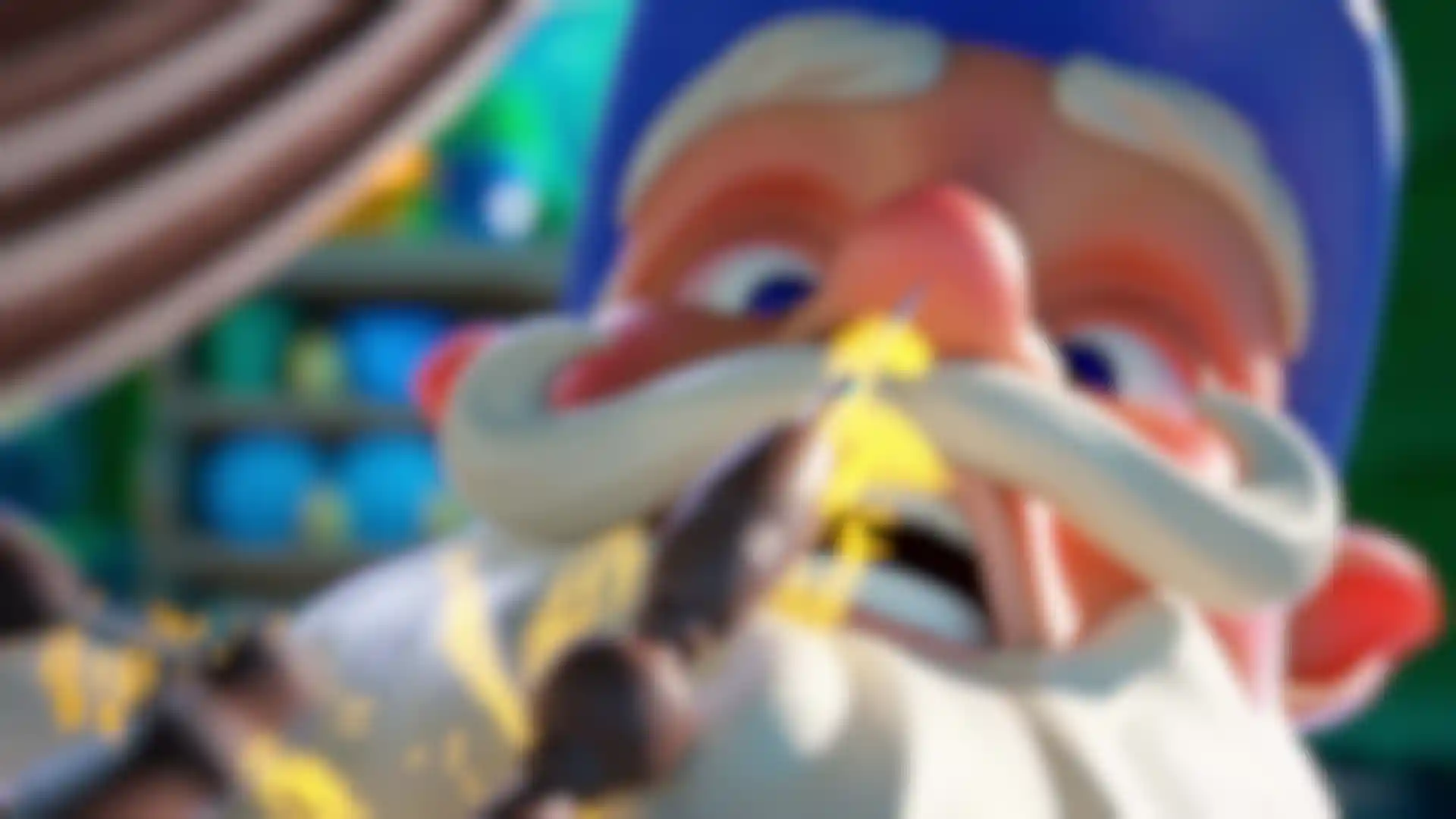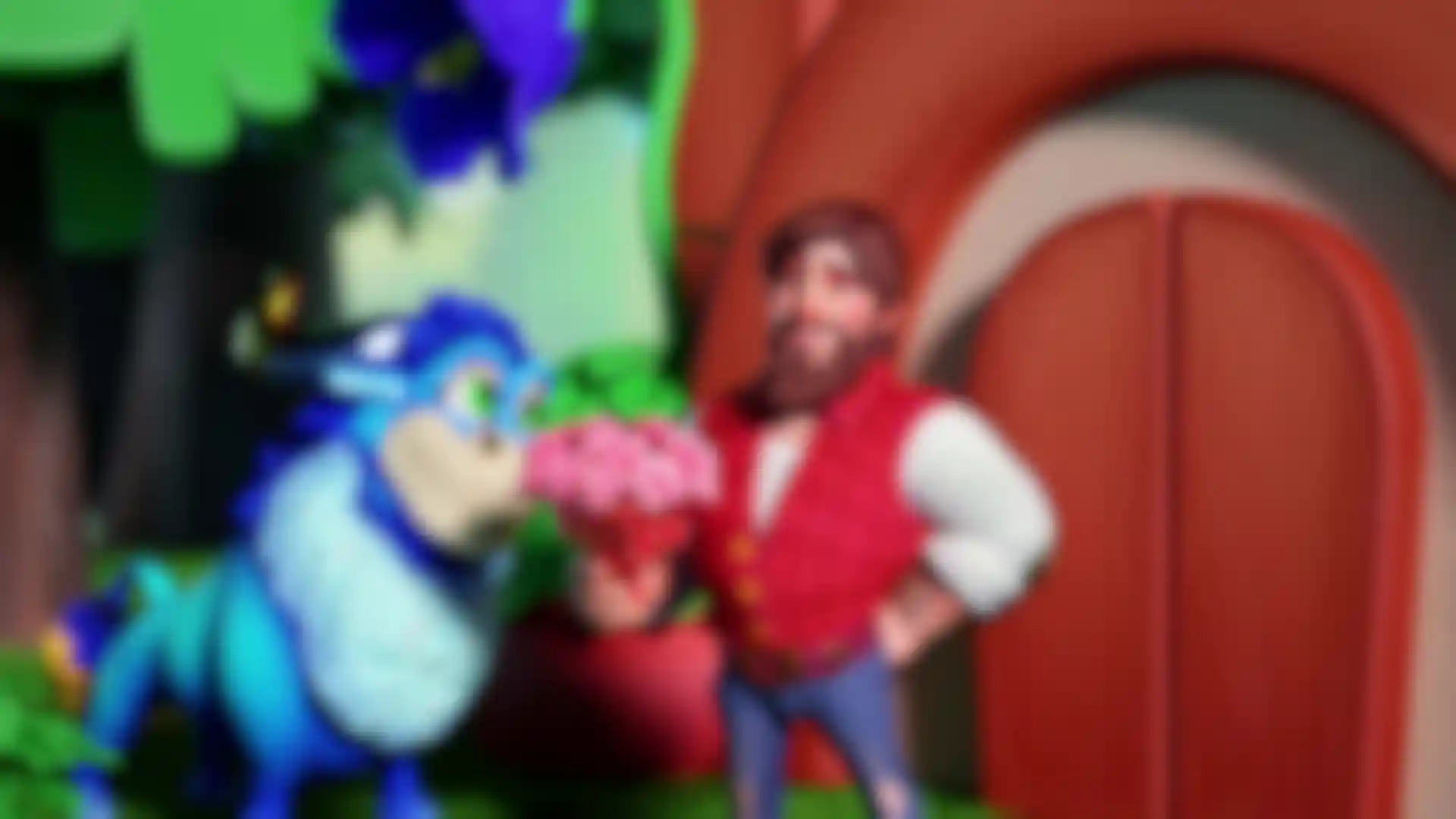
Bomper Studio on Making CG teasers for ‘EverMerge’ Using Maxon One to reimagine classic fairy-tale characters with a modern twist.
When award-winning games publisher Big Fish approached Bomper Studio to create a CG animation to promote their mobile game ‘EverMerge’, the successful collaboration led to a seven-strong collection of animated stories, complete with expressive characters, magic and mayhem.
Knowing the project required 3D character development, detailed CG environments, effects and animation, Bomper used a powerful combination of tools, including Cinema 4D, Redshift, ZBrush, After Effects, Houdini, Substance, Maya and Octane.
We asked Producer Robyn (Bobbie) Viney and lead artist Zach Evans to tell us more about the studio and take us behind the scenes of how they created the “EverMerge” animations.
Please tell us a bit about Bomper Studio and the EverMerge project.
Viney: Bomper Studio is based in Wales U.K., and we have a core team of twelve directors, artists, animators and producers, often scaling up to 25-30 on larger productions. Our ethos is based on our inherent curiosity and a drive to push ourselves, experiment, and challenge our ambitions.
“EverMerge” is a world-building puzzle game developed by Big Fish that reimagines classic storybook-inspired characters with a modern twist. The animated films explore the character lore and magical in-game worlds through comedy. Big Fish provided all storyboards for each of the seven films, and we executed their vision in 3D while adding some flairs and flourishes of our own.


What excited you most about the opportunity?
Viney: Really it was the collection of stories, the expressive character designs and the overall rich aesthetic of the game. The series concept is influenced by a sense of magical and modern, so while environments are firmly within the world of stylized fantasy, the characters and small details are more up to date, which makes the characters relatable for the audience.
For instance, characters are often seen engaging with mobile phones, tablets and laptops and we looked forward to reflecting that modern twist through texturing, environments, scene compositions, lighting and animation.
How did your workflow and tools support the project?
Evans: Because we were working on a series of shorts, we approached the project as a bank of assets that we could reuse in different scenarios, like extreme close-ups, as well as repopulating new “EverMerge” animations down the road. We built a custom look development scene in Cinema 4D and Redshift so that we could build and develop materials throughout the course of the production.

We relied on Cinema 4D for modeling objects and creating simulations. We used the Instancing tool to place duplicated geometry around our scenes, populating sweeping vistas with thousands of grass and nature assets with just a few clicks.
We used Redshift to handle all of the rendering, and the more time we spend with it, the more we discover neat tricks. One of the main draws is light linking, which is especially useful for stylized scenes. We also made use of the Matrix Scatter tool to manage the heavy environment geometry, such as adding grass, flowers and small rocks.

And, while some assets were provided by the client, we built most environment objects in-house from concepts. Models were drafted and blocked out in primitive forms using simple shapes in Cinema 4D, which we imported to ZBrush. Being able to sculpt the stylized look onto objects while also adding in some finer details really helped elevate our work.
Is there one animation that stands out for you?
Viney: It would have to be “Before the Fog” which uncovers the origin of the game and how the fog appeared. The goal of the game is to clear the fog and reveal more of the world, and this film helps drive that narrative.
It introduces a few of the immersive environments and all the characters, some of whom are involved in epic transitions and action sequences. Despite their short screen time, we paid extra attention to character development and our team pulled out all the stops to this film extra special.
What were the most challenging details to get right?
Evans: Throughout each film, secondary animation and simulation work, such as flickering flames, dust particles and fog, were used to bring the atmospheric, magical worlds to life. However, bringing the fog to life in "Before the Fog" presented a unique set of challenges. It was important for the fog to have its own personality and purpose, rather than simply being a weather effect or an engulfing wave.
To make the fog more dynamic, we created a rigged character specifically for each shot and used Houdini FX to add soft cloud volumes to the primitive fog rig. Lighting the fog also required careful consideration.

Using Cinema 4D and Redshift, we set up the scene and lighting so that the fog volume would stand out on its own, while also working with the existing lights used for the characters. We found that lighting the fog almost independently, with its own HDRI and rotation, helped us achieve the desired effect.
Was there one tool that helped elevate scenes across the series?
Evans: As movie fans and filmmakers, Redshift allows us to translate our camera knowledge into our work. We’re all appreciative of the amazing depth of field options that add that wow factor and help the effect have a purpose, while also adding a signature modern-yet-magical appearance.
Even in shadow, Redshift’s global illumination really helped to paint the colors and ambiance of an environment. Environment Scatter allowed us to create God rays, leading the viewer’s eye to our characters.

Beyond the storyboard, how were you able to enhance the characters?
Evans: We were supplied with the characters but developed them further, modifying scale and textures to align with the gameplay and the stop-motion aesthetic. We also produced rigs for some of the hero characters and added as much gestural expression in body movements as possible.
We really played into the comedic scenarios in each of the boards. And we looked to implement interesting camera moves where possible, which not only helped raise the production values of the films but added depth and comedy to those character nuances.
What did you enjoy most about the project?
Evans: The stylized nature of “EverMerge” is a treat to work on and great for exploring other avenues of design and animation that you wouldn’t normally find when working on hyper-real and VFX-heavy jobs. Being able to push what we can do in Cinema 4D has been exciting, especially when it comes to finding new ways of lighting characters and scenes. I have developed some wacky methods for lighting all sorts of scenarios on this project.